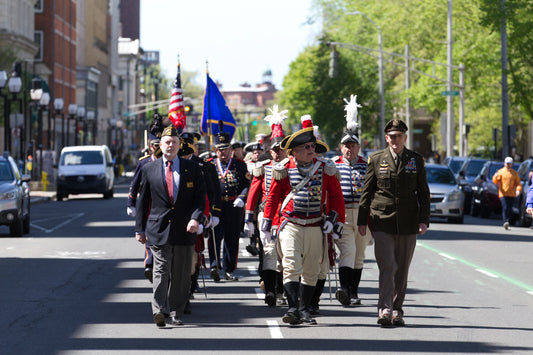By 1 p.m. Saturday, roughly 30 of us had gathered at the designated meeting spot, a stone’s throw away from the Grand Avenue Bridge’s eastern barricades. Interest in the New Haven Preservation Trust’s walking tour of the Quinnipiac River Historic District—added to the National Register of Historic places in 1984, thanks in great part to John Herzan of the Trust—was strong enough that the Trust had had to cut off signups. And unfortunately for those on the waiting list, the near-perfect weather assured a full turnout.
sponsored by
We were greeted by Fair Haven Heights resident Patricia Kane, currently a Green Party alder candidate for Ward 13. She pointed out a set of new historical markers she produced under the auspices of the Quinnipiac East Management Team and funded by the city and The Community Foundation for Greater New Haven. They’ll be erected near neighborhood points of note: the Grand Avenue Bridge, Christian Hill, the Clifton Street Canoe Ramp and, at 610 Quinnipiac Avenue, Norm Bloom and Son/Copps Island Oysters.
Bloom and Son’s Patty King soon took the baton, giving us an education in modern-day oyster farming. Although the company’s main office is in Norwalk, as much as 80 percent of its farming occurs here in New Haven. At 610 Quinnipiac, where a plan for a new hatchery was announced last month, a tiny farm stand normally operates on Saturdays from 10 a.m. to 2 p.m., though it’s been temporarily closed due to recent storms.
Author and amateur historian Neil Berro took over from King to give a brief history of local oystering. We learned that native Quinnipiacs seasonally camped in wigwams along the river, where fresh water and saltwater converge to form happy conditions for oystering. They introduced New Haven’s early settlers to the practice, which more or less flourished for nearly another three centuries. Prime specimens of these local bivalve mollusks measured more than 5 inches across and led President Abraham Lincoln to publicly praise Connecticut oysters at his inaugural dinner in 1861. But by the early 20th century, pollution from other industries had taken its toll on both the health and number of New Haven’s oysters. Only after the passage of the Clean Water Act in 1977 did the area see a strong improvement in water quality and a gradual return of the ability to oyster.
Jason Bischoff-Wurstle, Director of Photo Archives at the New Haven Museum, then filled us in on a variety of historical details as we walked southward on Quinnipiac Avenue. These included the story of Henry C. Rowe, who applied robber baron-style business practices to the local oyster industry, effectively taking it out of the hands of smaller farmers by using his extensive resources to create a monopoly. By 1902, he had amassed the largest private oystering acreage in the country. Bischoff-Wurstle also described Fair Haven’s role in the advancement of transportation in the New Haven area, particularly with the building of the city’s first bridge in 1792, connecting both sides of the river-spanning village known then as Dragon. He went on to explain that the eastern side, which became Fair Haven Heights, would become part of East Haven before being reincorporated into New Haven.
Kane then took over and brought us to the Clifton Street Canoe Launch, which she identified as the neighborhood’s only public recreational access to the river. Several men were fishing at water’s edge as Kane remarked that plans are in the works for lockable racks for kayaks and canoes. She also divulged the planned October opening of the Grand Bridge Grill, a new restaurant overlooking the river near the launch—a promise of future meals to finish the day’s historical feast.
Written and photographed by Nancy McNicol.








